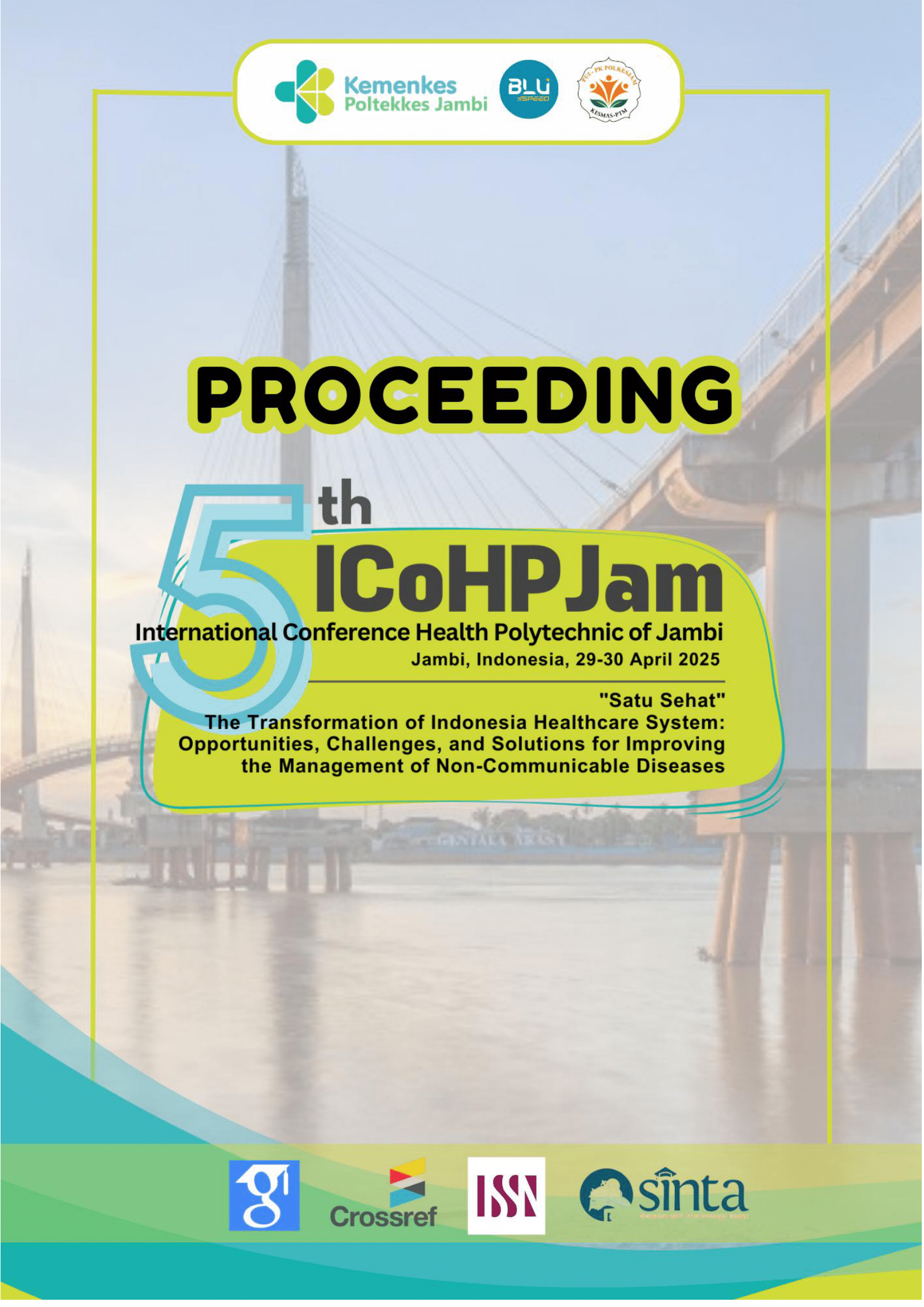Relationship Between Proportion of Vegetable and Fruit Under Consumption and Proportion of Diabetes Mellitus Types in Indonesia
Abstract
Background: Diabetes Mellitus (DM) is a global health problem with an increasing proportion in Indonesia. This study will analyze the relationship between average fruit and vegetable consumption and the proportion of Type 1, Type 2, and Gestational Diabetes Mellitus (GDM) in Indonesia based on data from the 2023 Indonesian Health Survey (IHS). This study aims to determine the relationship between the proportion of less consumed vegetables and fruits and the Proportion of types of Diabetes Mellitus (Type 1, Type 2, and GDM).
Method: This study uses a correlation design with secondary data aggregate from IHS2023 which covers all provinces in Indonesia. The independent variable is the proportion of people who consume fruits and vegetables, while the dependent variable is the proportion of each type of DM.
Result: The results showed that the proportion of undereating vegetables and fruits in Indonesia is very high (96.1%), highest in the Sumatra Region (97.1%) and lowest in the Papua Region (93.4%). Type 2 diabetes in Indonesia is dominated by type 2 (46.7%) followed by type I (21,6%), GDM (2,8%), and the rest are unknown DM types. The results of the analysis showed that there was a relationship between the proportion of eating less vegetables and fruits and the proportion of Type II Diabetes Mellitus (p-value 0.003, r=0.475), but it is not significantly related to Type I DM and GDM.
Conclusion: There is a significant relationship between the proportion of eating less vegetables and fruits and the proportion of Type II Diabetes Mellitus. The higher the proportion of eating less vegetables and fruits, the higher the proportion of type II DM.
Background: Diabetes Mellitus (DM) is a global health problem with an increasing proportion in Indonesia. This study will analyze the relationship between average fruit and vegetable consumption and the proportion of Type 1, Type 2, and Gestational Diabetes Mellitus (GDM) in Indonesia based on data from the 2023 Indonesian Health Survey (IHS). This study aims to determine the relationship between the proportion of less consumed vegetables and fruits and the Proportion of types of Diabetes Mellitus (Type 1, Type 2, and GDM).
Method: This study uses a correlation design with secondary data aggregate from IHS2023 which covers all provinces in Indonesia. The independent variable is the proportion of people who consume fruits and vegetables, while the dependent variable is the proportion of each type of DM.
Result: The results showed that the proportion of undereating vegetables and fruits in Indonesia is very high (96.1%), highest in the Sumatra Region (97.1%) and lowest in the Papua Region (93.4%). Type 2 diabetes in Indonesia is dominated by type 2 (46.7%) followed by type I (21,6%), GDM (2,8%), and the rest are unknown DM types. The results of the analysis showed that there was a relationship between the proportion of eating less vegetables and fruits and the proportion of Type II Diabetes Mellitus (p-value 0.003, r=0.475), but it is not significantly related to Type I DM and GDM.
Conclusion: There is a significant relationship between the proportion of eating less vegetables and fruits and the proportion of Type II Diabetes Mellitus. The higher the proportion of eating less vegetables and fruits, the higher the proportion of type II DM.



